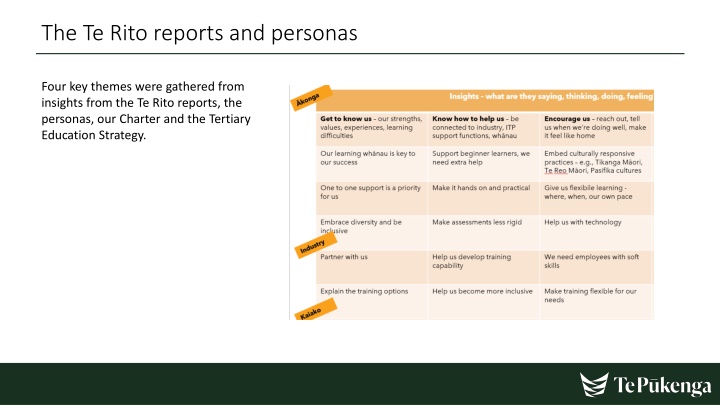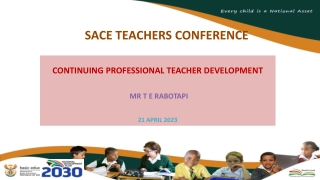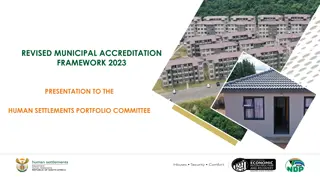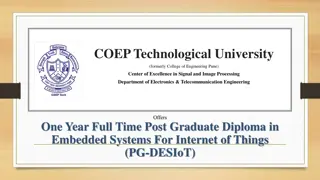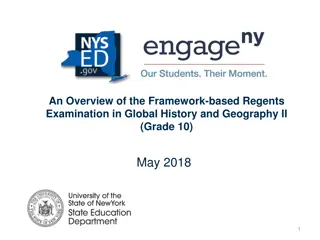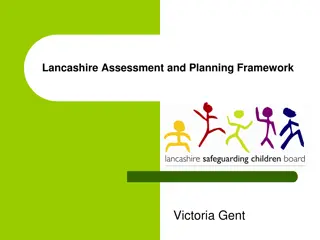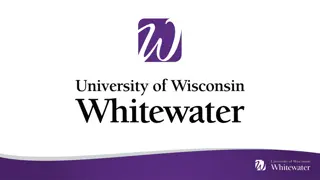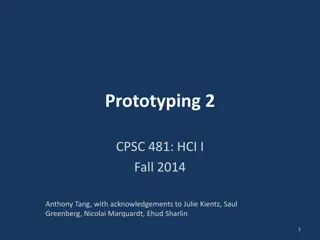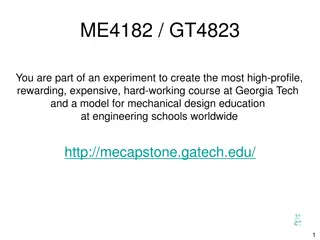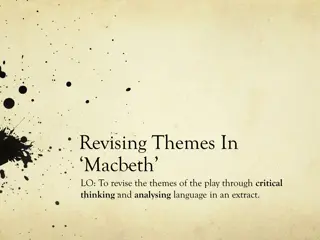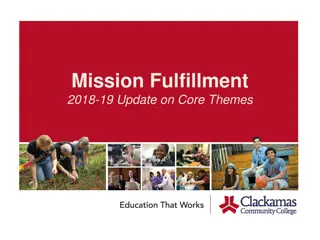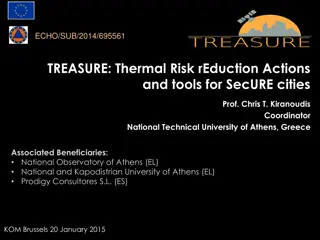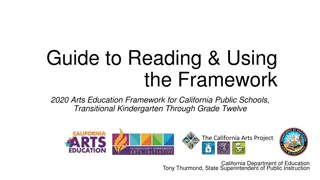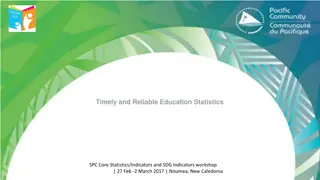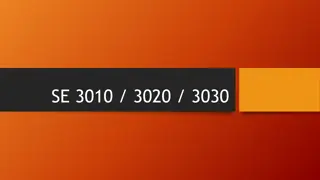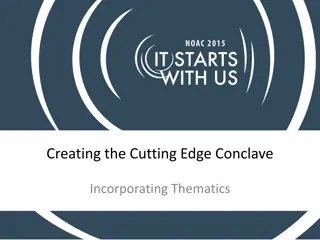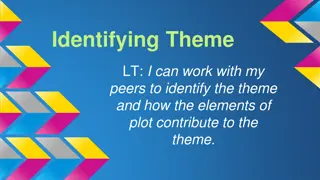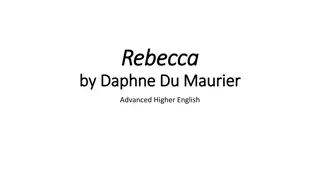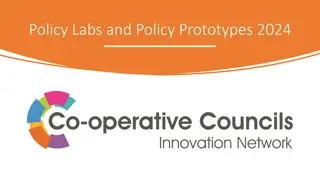Key Themes and Prototypes in Education Framework
Gather insights on key themes from Te Rito reports, personas, and develop prototypes for the Ako Framework. Explore the guiding principles and collaborate with capability experts for capability development across Te Pūkenga.
Download Presentation

Please find below an Image/Link to download the presentation.
The content on the website is provided AS IS for your information and personal use only. It may not be sold, licensed, or shared on other websites without obtaining consent from the author.If you encounter any issues during the download, it is possible that the publisher has removed the file from their server.
You are allowed to download the files provided on this website for personal or commercial use, subject to the condition that they are used lawfully. All files are the property of their respective owners.
The content on the website is provided AS IS for your information and personal use only. It may not be sold, licensed, or shared on other websites without obtaining consent from the author.
E N D
Presentation Transcript
The Te Rito reports and personas Four key themes were gathered from insights from the Te Rito reports, the personas, our Charter and the Tertiary Education Strategy.
Taura-Here and the Ako Framework prototypes Using a human centred design approach, we asked Taura-Here (Champions from across the network) to submit Ako Framework prototypes.
Prototype sorting into buckets We received over 70 prototypes from our Taura-Here. These prototypes were sorted into common ideas, or buckets .
Guiding principles It became clear that the Ako Framework needed to be designed in such a way that represented the six buckets . Guiding principles (tikanga) from each prototype was placed in a corresponding bucket . Once in the correct bucket, the guiding principles were then grouped into the four themes below: Future skills/human skills Accessible, responsive, flexible Practical/work based authentic Relationships/partnerships
Working with capability experts Using this process, we developed our first iteration of principles (tikanga) for capability development across Te P kenga. Our focus area After receiving a number of prototypes from Taura-Here from the LTAG (Learning and Teaching Advisory Group), we decided to work with representatives from this group to review and refine the guiding principles from all the prototypes that centred on capability development. Historically over 60% of our konga are work-based, so it was a priority to bring together capability experts from WBL subsidiaries too.
Wnanga Members of the Ako Framework steering group held a one- day w nanga in Wellington on Thursday July 7, 2022. The priority was whakawhanaungatanga and understanding how our mahi linked together, and our kaupapa was to: review and refine the initial draft list of guiding principles (tikanga) for Kaiako capability development across Te P kenga share examples of ako best practices from across the network: on campus, work-based, distance.
Wnanga insights We hoped these examples of ako would feed into the development of key capabilities required for what we might see, hear in the future at Te P kenga. We believed if we could gather examples of great ako, we could start building a capability framework. We also provided the opportunity for three capability teams to introduce how (kawa) they supported capability development in their context. Insights were gained from Unitec, BCITO and UCOL.
DRAFT Capability Tikanga (guiding procedures) After our w nanga, we refined the high-level principles (tikanga) to create the second iteration. We then went back to members of the w nanga group for further feedback at an online hui. The high level principles were further refined at an ADI hui at Manukau Institute of Technology. This was our third iteration. Further feedback from various groups has led to our fourth iteration of the high level principles (tikanga) for capability development across Te P kenga. This iteration will now go out to the Ako Framework for wider consultation and feedback. After our w nanga, we refined the high-level principles (tikanga) to create the second iteration. We then went back to members of the w nanga group for further feedback at an
Feedback Engagement from our capability team of experts has been fantastic! Feedback about the draft tool and tikanga statements has brought people from across the network together, asking questions, supporting each other and imagining what could work and what won t. At our w nanga, we learnt that the roles of an on-campus Kaiako, a training advisor at a WBL subsidiary and an on-job trainer were very different! We had a go at developing a tool that might be used across the Te P kenga network to support capability development discussions. At an online hui with a smaller group of capabilty development experts across the network, we shared this tool, reshaped it a bit after feedback and took it back to the ADI team and the wider capability group for further feedback.
DRAFT Tool to support Ako capability discussions In In Future skills Future skills Hands on Hands on Responsive Responsive partnership partnership Do this occasionally Do this regularly Do this often Ako Get to know your konga Kaiako share and explain konga listen konga share and explain Kaiako watch and listen konga use their strengths, knowledge and experiences Kaiako learn from konga Design and support learning experiences Kaiako present & demonstrate konga listen and watch konga try things Kaiako mentor konga solve problems Kaiako coach Facilitate learning experiences for your konga konga follow instructions Kaiako treat everyone the same konga all learn differently Kaiako help konga learn konga learn together (tuakana-teina) Kaiako provide the activity, job or scenario Find out if your konga have gained new knowledge and skills konga copy Kaiako give feedback konga give feedback to each other Kaiako listen, watch and feedback konga learn from experience and know when they re successful Kaiako ask questions Think about what has worked and what you could do differently
